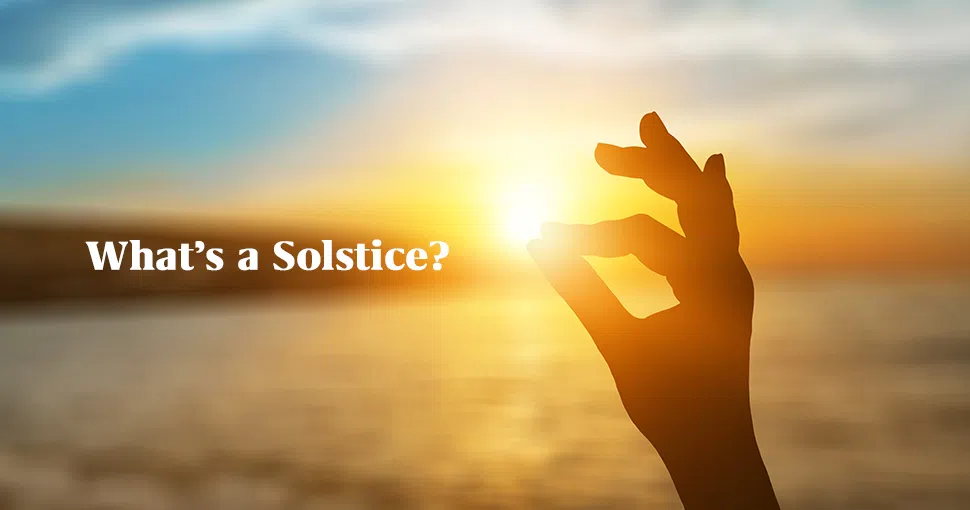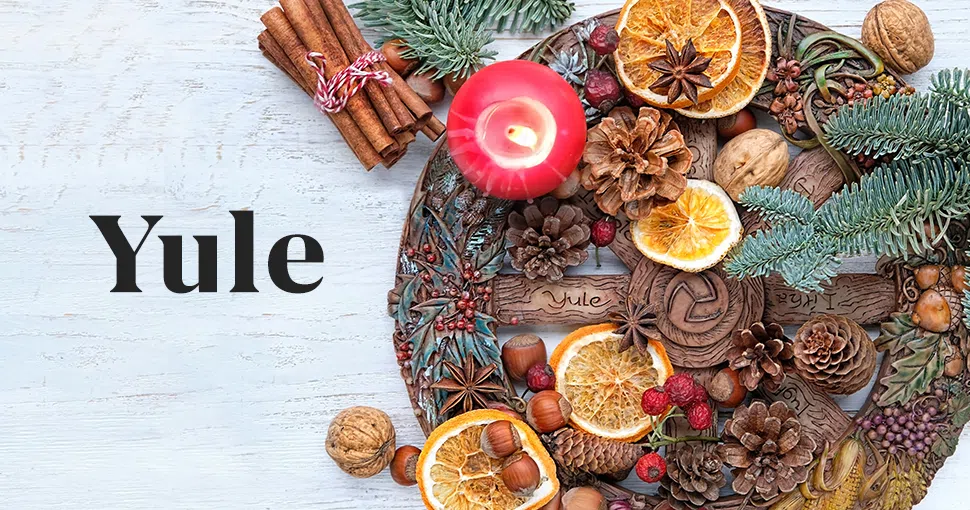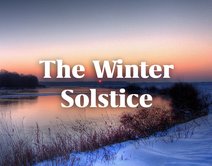The winter holidays for many entails burning white candles, decorating evergreen trees, giving gifts, and gathering with family and friends. Many of today’s celebrations focus on Christmas, but that holiday has not been around for as long as sacred winter celebrations in general have, and Christmas is fairly new. Sacred holidays in the British Isles and the Germanic lands were celebrated by indigenous people there in Pre-Christian times and their celebrations are part of what created today’s Christmas observances. Plenty of people still observe the Winter Solstice and Yule, though, and their rituals and special days focus on the infinite flame of the sun and its strengthening heat and light. This article will discuss Yule and The Winter Solstice and will focus on:
- What’s a Solstice?
- The Winter Solstice
- Yule
- Why Gifts?
- Good Luck Symbols of the Season
- Creating Positive Energy for Winter Solstice
Beautiful red birds on white snow, smoke and flame from cozy fires at home or glimmering candles, soulful journeys to see loved ones, and high emotions and energy all mark winter holidays. It’s time to feast, rest, give positive energy, and exchange gifts. Most people do all these things, but not everybody knows the meaning behind the original holidays that influence today’s winter holidays. Happening in December, the Winter Solstice and Yule are both meaningful and sacred. Both holidays have different traditional celebrations, and believe it or not, they don’t happen at exactly the same time, although some people believe all winter holidays occur on the same day. While some say a simple prayer and do nothing else, other people go all out for Winter Solstice or Yule, enjoying every last moment of it.
What is the Winter Solstice and Yule, and what do they specifically celebrate? Why are gifts given, what are some sacred symbols, and how can you celebrate them yourself? Light a lantern, join in burning white candles for protection, or better yet build a mighty bonfire, and watch for first daylight on the Solstice while you decorate, feast, drink with friends for Yule and read on to learn about these sacred days and how you can enjoy them.
What’s a Solstice?

Solstices occur twice per year, once at Winter Solstice, and then again at Summer Solstice. The word means “sun stand still” and following the Winter Solstice, the days will begin to get longer and the nights shorter, and after the Summer Solstice, the days will grow shorter, and the nights will get longer. The Summer Solstice in the Northern Hemisphere is June 21 and the Winter Solstice is December 21. What this means is that on Summer Solstice, it is the day with the maximum amount of sunlight and the shortest night, and Winter Solstice is the shortest day and longest night. When the Northern Hemisphere has one Solstice, the Southern has the opposite, and this is because of how the earth tilts. Summer Solstice shows that section of earth tilting closer to the sun, and Winter shows it tilting away from it.
These are observed as seasonal high days and have been sacred to agricultural people who watched the seasons and how they affected the earth and harvest cycles. Winter Solstice is called midwinter and Summer Solstice is called midsummer. Winter saw lean and hungry times when survival was treacherous. Food stocks could dwindle and injuries from extreme cold or illness could claim lives or weaken people or their livestock. Prayers and magic for protection were worked into sacred observations and supernatural intervention to see the people and their homes and animals through winter was sought. In contrast, Summer Solstice was a time for celebration, and blessings on the crops, orchards, animals, and people as they worked towards a bountiful harvest.
Today, these ancient celebrations are not observed everywhere, but some people still observe them. Christianity has absorbed some of the folk practices into Christmas gatherings with things like fairs, flea markets, and feasts for celebration. Times may have changed, but what sacred means at these times has not. Intuitives still honor the seasons and our connection to them and use ways to bring positive energy during the Solstices. Today, let’s focus on the Winter Solstice and the meaning of it and how to celebrate it.
The Winter Solstice

Winter Solstice takes place in a moment when the daylight is at its shortest, and a moment later, it begins to lengthen. Some celebrated this as the death and rebirth of the sun itself, and some characterized it as the rebirth of the father god. Ancient Celts believed the sun stood still for twelve days, and they burned fires to drive out evil spirits, provide light to combat the darkness, and to bring luck. The rising sun appearing, meaning first daylight, on the Winter Solstice was especially powerful. What does the rising sun mean on the Winter Solstice? It means the sun is gathering strength, and the people understood the meaning of praying and working magic to help “feed,” or strengthen the sun.
Huge bonfires were lit, and in some places, people would put out their fires at home, and take a flame from the bonfire to relight the fires in their homes. Burning white candles meaning can be the same as this, bringing fire and light into the home in the darkness of night. Like a flame that burns the candle, today’s people use electric lights on their holiday trees and outdoors on their homes to emulate light in the darkness, giving strength to the sun when it is at its weakest.
Ceremonial cutting of mistletoe six nights after Winter Solstice was done with a gold sickle by the Druids and to them it represented the sexual power of the male gods, most especially Taranus. It was cut and given to the people to hang over their doors as protection from thunder, lightning, and other malevolent forces.
Mistletoe is also used today in “kissing balls” , but before Christmas Trees were a part of Christianized celebrations, green boughs from trees with red candles and a sprig of mistletoe called “the mistletoe” was displayed in homes and the red candles adorning it were lit daily beginning on Christmas Eve for twelve days.
Some say the moment of the Winter Solstice is impossible to compute because the sun does not actually stand still, however, some ancient sites disagree. At Newgrange, a neolithic passage tomb in County Meath, Ireland, one of the chambers “catches” a ray of sunlight on Winter Solstice, which fills the whole room with its light for about seventeen minutes. We don’t know exactly what this meant to these people, but something similar happens at a place called Stonehenge which is on Salisbury Plain in Wiltshire, England. The Midwinter sun rises in between two massive inner trilithon stones. It has also discovered that the tallest remaining stone at that site points to the Winter Solstice sunrise. While we don’t know exactly how the Solstice was observed at places like Newgrange or Stonehenge, we do know the fact people erected such massive structures that “caught” the moment the sun rose on that day meant the Midwinter Sunrise was very important to them.
Yule

Yule comes from Germanic lands and is usually celebrated for more than one day. Depending on who is celebrating it, Yule can be a one-day celebration. It can also last three days, twelve days and nights, or up to two months! Modern Christmas season celebrations begin the day after Halloween, and last until mid-January for some people, in contrast. The word Yule is a modern version of the name for Odin, which is Jol, and while the season itself is celebrated, it’s pretty much Odin’s season. Indeed, jolly old Santa in winter bearing gifts being led by eight reindeer is believed by many to be based on Odin, father of the gods, who rides an eight-legged horse!
What Yule celebrates is the pre–Christian Winter Solstice celebrations that were observed in the Germanic lands. In pre- Christian times it began at sunset on the Winter Solstice and the first night is called Mother’s Night, celebrating the Disir, or female spirits, and goddesses like Frigga, the goddess of motherhood and marriage. Some celebrate the lives of human mothers at this time as well. It is believed that sacrifices and rituals were done and kicking off the twelve-day celebration with veneration of female deities has been seen by some as an attestation to the respect the Germanic tribal people had for women.
It is believed that the spirits of the dead return to earth to celebrate Yule with their living loved ones and that trolls, elves, and other magical creatures roam the earth as well. Some ward these beings off while others welcome them, and the folklorist Jacob Grimm wrote about The Wild Hunt, where Odin leads a spectral hunt with the dead that some say you can see, and others say you can only hear it. The Wild Hunt is considered dangerous to see or hear, but some people leave food offerings and gifts out for them anyways.
The Yule feast welcomes not only other types of beings and the dead but gathers in the living. The Saga of Hakon the Good stated that Hakon was Christian but made it law that Yule and Christmas would both be celebrated, and he ordered that everybody bring food and ale to share for the celebrations, and the parties would go on until all the food was eaten and all the ale had been drunk. Three toasts began the rounds of toasting with the first round being drank to Odin himself, the second being drank to the gods Nord and Freyr, and the third to be drank to the king or host of the gathering. Additional toasts could be done as well. At the temple, it was written there was ritual and sacrifice as is attested to here:
“ It was ancient custom that when sacrifice was to be made, all farmers were to come to the heathen temple and bring along with them the food they needed while the feast lasted. At this feast all were to take part of the drinking of ale. Also all kinds of livestock were killed in connection with it, horses also; and all the blood from them was called hlaut [sacrificial blood], and hlautbolli, the vessel holding the blood; and hlautteinar, the sacrificial twigs [aspergills]. These were fashioned like sprinklers, and with them were to be smeared all over with blood the pedestals of the idols and also the walls of the temple within and without; and likewise the men present were to be sprinkled with blood. But the meat of the animals was to be boiled and served as food at the banquet. Fires were to be lighted in the middle of the temple floor, and kettles hung over the fires. The sacrificial beaker was to be borne around the fire, and he who made the feast and was chieftain, was to bless the beaker as well as all the sacrificial meat.”
A sacred loaf of bread shaped like a boar was made, and oaths were sworn on this Yule Boar. Oaths were not something taken lightly, and the mead horn or cup was also used to swear especially sacred oaths. Oathing is a sacred part of pre-Christian heathen religious practice many still practice today. The belief is that if you make an oath, you will keep it, lest the gods punish you. When oaths are made in general, but especially at a time like Yule, they are taken very seriously. It is also believed by some that the people who you share a horn with at gatherings like Yule are bound to you in sacred brotherhood, so some people will pass the horn along and will not partake if there is someone there who they do not want to be bound with.
Gifts bedecking trees outdoors for the sacred beings are decorated by some, and others make straw figures and paper cutouts of animals sacred to the Norse gods. Goats, and boars in particular are crafted, and a huge Julbok- or Yule goat is burned some places in memory of the god Thor’s goats who pull his chariot. It is believed that Thor’s goats protect people’s homes during Yule, and the sound of thunder is their hooves. It is believed they bring with them the promise of Spring’s return. In some places, people dress in goat skins and wear masks, going door to door spreading cheer during Yule.
Why Gifts?

Gifts are something that have been present during winter holidays and this is a very old tradition dating back for many generations. What do gifts mean at the Winter Solstice? Believe it or not, gift giving at this time of year likely came from ancient Romans who gave gifts at their Saturnalia celebrations. They honored their god Saturn and celebrated with feasting for all meaning lots of lavish dinners, with food being the most gifted thing and much revelry went on.
It was believed that food was especially gifted during winter months because food would be dwindling and saving up to make a great feast during cold times was seen as a great way to show faith that the sun would return, giving more light to raise more food, and celebrating the gods with feasting was respectful. Pooling meager resources was also wise, and a practical way to make sure everybody had enough to get by. During Saturnalia small gifts like clothes, books, and statues were given and it was believed these gifts would help the person receiving the gifts prosper the next year. If somebody gave you a gift then, but you did not have one for them, it was seen as a great insult!
Good Luck Symbols of the Season

So many beautiful symbols characterize the Winter Solstice season, but a few in particular that not everybody knows the true meaning of are the Yule Log, holiday trees, and wreaths.
The Yule Log
The Yule Log was felled and brought into the home and burned all twelve days of Yule. It was burned to power the sun, and it was believed the ashes and remnants of the log were sacred. Pieces of this would be set aside and used to light the following year’s Yule Log. It was believed the ashes from the burned Log protected against lighting, bad times, and various illnesses. The burning of the Yule Log also honored the god Thor and drove out malevolent spirits and energy.
Holiday Trees
Representing Yggdrasil, the world tree, holiday trees were in homes and decorated outdoors on properties. Evergreens were believed to have the power over death, were believed to ensure rejuvenation, and these energies were harnessed to strengthen the sun at Winter Solstice. The trees would be adorned as people saw fit, but some things that were symbolic were used. Coins and corn symbolizing prosperity were placed on the trees sometimes, and wreaths were hung on the tree as well. A big star on top to symbolize the sun was placed at times, and gifts for those you loved and for spirits and the gods adorned the trees as well.
Wreaths
Traditionally made to honor the sun, wreaths for the winter holidays emulated the circular shape of the sun wheel, or for some the sun cross. Various images of this symbol have been found all over Celtic and Norse lands, and it is believed the sun was venerated as a symbol of life, rejuvenation, and healing. Wreaths were used in ancient times to decorate, and they were sometimes burned as offerings to the sun. In Norse lands, wreaths were sometimes fashioned, set aflame, and rolled down hills to symbolize the sun’s return. They were also gifted to celebrate friendship. A lot of times, these were made of evergreen because it was both practical, ensuring the wreaths would stay fresh during the season, it represented rebirth, and were believed to fend off malevolent spirits and enhance feeling positive energy.
Creating Positive Energy for Winter Solstice

Creating meaning for your Winter Solstice celebrations is a very personal and powerful thing. You don’t have to observe the sunrise or decorate or party the way everybody else does to celebrate the Solstice, though. You can focus on your own personal practice at your altar, greet the sun on your own, or gather in your own way.
Decorating Your Home Altar
Some people decorate a tree, their yards, or even their entire house for the Solstice or Yule, but that is not everybody’s cup of tea. Instead, some people like to decorate their personal sacred altar with the things that represent the season. Things like wreaths and images of Odin or Santa to represent the spirit of the father god or strengthening sun are popular, and fruits and nuts eaten seasonally can be used as offerings as well. Lighting candles on a piece of wood representing the Yule Log and burning them for a time every night during the twelve days of Yule is something else you can do at your altar. Some people, believe it or not, use their holiday tree as a form of altar, placing gifts for their loved ones and ornaments with symbolic meaning on it.
Some people use ornaments on their trees that have been in their families for generations, and others don’t decorate a tree at all, but instead place food offerings for the animals outside as a form of altar space outdoors. Still other people do not have the desire or space to decorate, nor do they adorn an altar and instead, they volunteer to help decorate or donate trees or plants and wreaths to people who cannot afford to buy any. However you decide to adorn a sacred space for the holiday, your people, the spirits, and the strengthening sun will see and partake of the blessings and joy you have created.
Greeting the Sun
Some people gather with groups at events to watch the sunrise on Winter Solstice, but not everybody can be awake due to health issues or work schedules, and there are still ways to see the Winter Solstice Sunrise, believe it or not. Sites like Newgrange to livestreams and afterwards post recordings of the Winter Solstice on YouTube. The 2021 Livestream for when the Winter Solstice light flooded into Newgrange is here: (28) Winter Solstice Recording Tuesday 21 December 2021 - YouTube
Stonehenge also does a livestream and shares their footage on You Tube and you can see the 2021 Winter Solstice footage here: (28) Winter Solstice Sunrise 2021 LIVE from Stonehenge - YouTube
You can also greet the sun, speak to it, and pour libations, or liquid gifts into the ground for it anytime on Winter Solstice. Some people like to gift milk or wine to the sun, and others will burn incense for it, or light candles or a bonfire. Some people will also stay up all night on the eve of Winter Solstice, saying a prayer on the hour every hour of the longest night of the year. There is no one way to greet the sun on the Winter Solstice and whatever way works best for you is perfect.
Gathering
Not everybody likes big holiday gatherings, and prefer smaller, more intimate gatherings. Not everybody likes to go into people’s homes for big dinners, and not everybody can afford to buy gifts for everybody they know. Some people are away from home for jobs and cannot be with family and friends and have to gather with new people they barely know. All of this is okay. Big traditional gatherings with everybody you know can be a lot of fun, but when that is not possible, gathering in restaurants with a few people, or to go places like Metroparks for winter hikes or even just for a religious gathering with people you have never met before are all great ways to celebrate.
Also, gathering for the winter holidays should not be stressful or feel like an ordeal, and if family is pulling you in every direction, bowing out of gatherings entirely is an option also. Holiday gatherings should be about the sacredness of the season, and one thing that is sacred is protecting your emotional wellbeing. It’s okay to go nowhere for the holidays, and to stay in, doing prayers on your own, and gathering with people at other times if this is what is best for you.
No matter how you celebrate the Winter Solstice, or the exact moment of the day when you do, know that people around the world will be celebrating with you. May the brilliance of the sun fill you with love, light, and regeneration. May the gifts and hope and joy of the season be yours and may you gather with who you love. May your Winter Solstice celebrations be uplifting, soul warming, and meaningful. So be it.
We have selected the most relevant psychics for this article, you can connect with any of them and get accurate advice on this subject.









